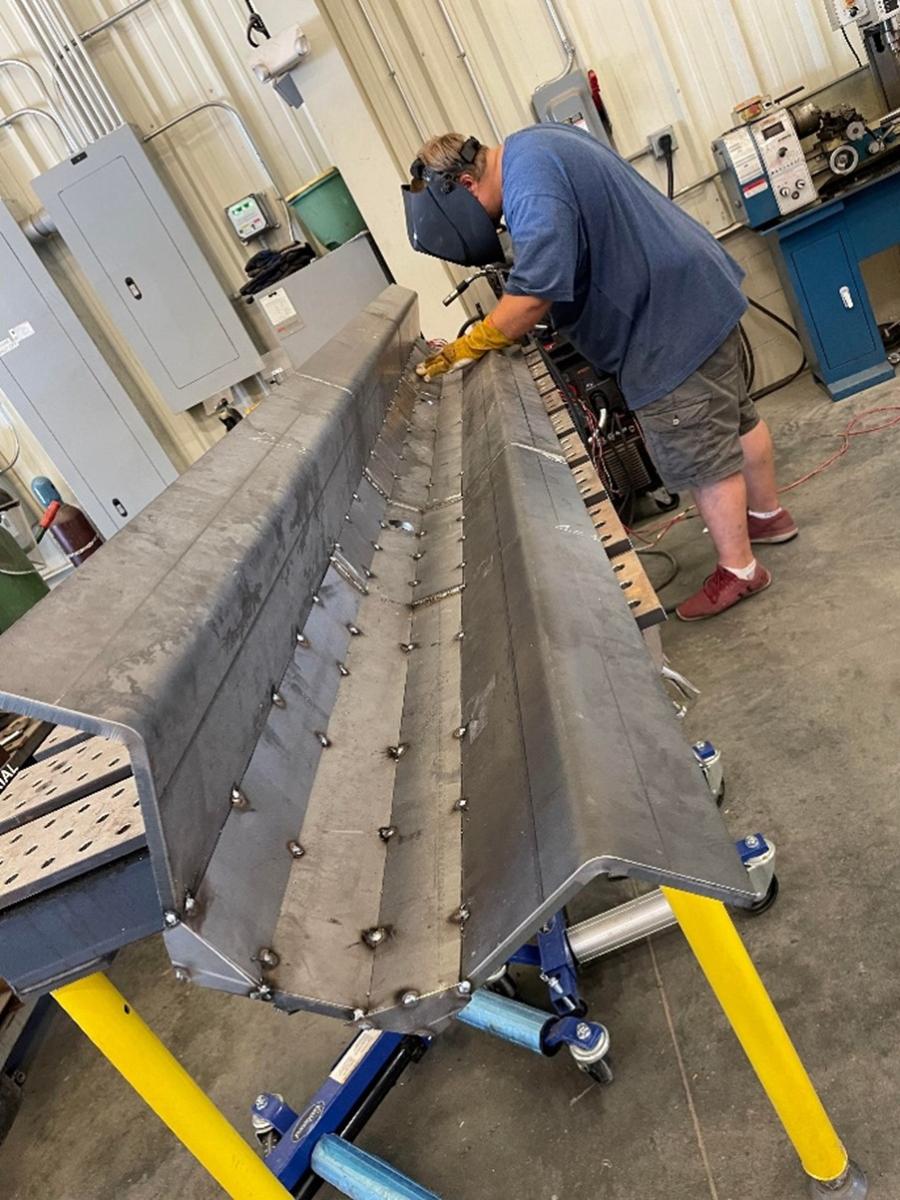Sheet piles are being recommended for installation at short-span or low-traffic volume water-crossing bridges in Nebraska to avoid scouring and protect backfill soils. It is also hypothesized using sheet piles would lead to advantages in construction time and cost, as well as improved aesthetics. Dr. Seunghee Kim was principal investigator for a Nebraska Department of Transportation (NDOT) and USDOT Federal Highway Administration funded study titled “Feasibility Study: Application of Steel Sheet-Piles for the Abutment of Water-Crossing Bridges in Nebraska”. The project tested sheet pile samples by applying shear stress in a large-scale testing setup.
A sheet pile sample was obtained from the same manufacturer and using the same steel material approved for sheet pile bridge abutments. The large-scale testing setup consisted of two boxes containing sand layers above and below the sample. A wooden plate covered the top box of sand so pressure could be evenly distributed downward by a pneumatic cylinder and air pump. Pressure was also applied to the side of the top box using a hydraulic piston. This exhibited shear stress on the sample due to its horizontal direction and together the two forces better simulated the environment of forces on a bridge abutment.
This testing gave the research team an idea of the ultimate bearing capacity a sheet pile would have before bending failure. Because of this, they could simulate different bridge criteria in a numerical parametric study to know how the sheet pile abutments would hold up under different bridge design conditions. Criteria included span length, excavation depth, sheet-pile type, sheet-pile length, adoption of anchors and Deadman concrete.
In conclusion, researchers found sheet pile abutment systems can be a reliable option for support in short-span bridges. Future work could include performing a full-scale static loading test with sheet pile rows, testing in different soil situations, and investigating buckling failure and the concept of pile plugging which happens when the sheet piles are driven into the soil.
Dr. Kim has been an assistant professor at UNL since 2016 and has recently been promoted to associate professor. Dr. Kim is part of the Nebraska Center for Materials and Nanoscience and UNL’s Midwest Roadside Safety Facility. He is also head of the Energy-Geosystems Research Group.

